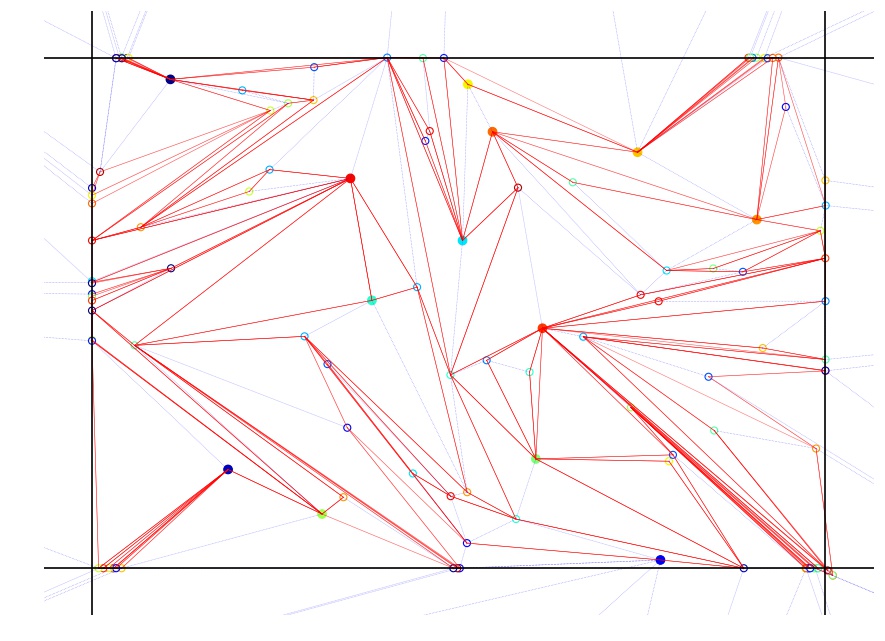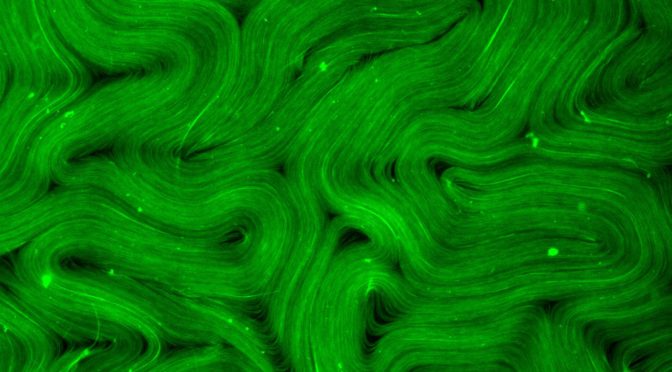Topological chaos in active nematics, Amanda J. Tan, Eric Roberts, Spencer Smith, Ulyses Alvarado, Jorge Arteaga, Sam Fortini, Kevin Mitchell, and Linda S. Hirst, Aug 5th, NATURE PHYSICS (2019) Link
Abstract: Active nematics are out-of-equilibrium fluids composed of rod-like subunits, which can generate large-scale, self-driven flows. We examine a microtubule-kinesin-based active nematic confined to two dimensions, exhibiting chaotic flows with moving topological defects. Applying tools from chaos theory, we investigate self-driven advection and mixing on different length scales. Local fluid stretching is quantified by the Lyapunov exponent. Global mixing is quantified by the topological entropy, calculated from both defect braiding and curve extension rates. We find excellent agreement between these independent mea-sures of chaos, demonstrating that the extensile stretching between microtubules directly translates into macroscopic braiding of positive defects. Remarkably, increasing extensile activity (through ATP concentration) does not increase the dimensionless topological entropy. This study represents an application of chaotic advection to the emerging field of active nematics and quantification of the collective motion of an ensemble of defects (through topological entropy) in a liquid crystal.
The full text of the paper can be found here https://rdcu.be/bM3Gi


